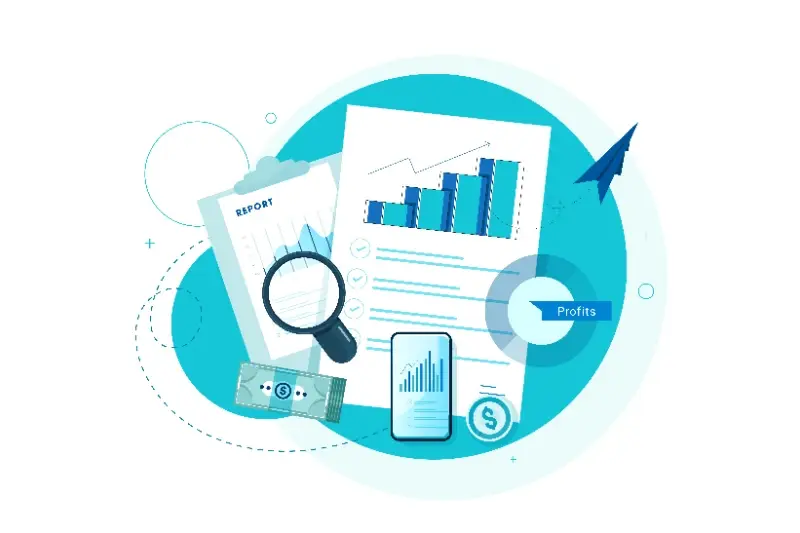Profitable Mobile App Business Models Beyond In App Purchases
If you're diving into the world of mobile app development, you've probably spent countless hours perfecting your app's features and user experience. But there's one question that keeps popping up: "How will this app make money?" It's a bit like building a fantastic shop but not knowing what to charge for your products.
Success in the mobile app market isn't just about creating a great product - it's about choosing the right revenue model that serves both your users and your bottom line.
The good news is that app monetisation strategies have evolved far beyond the simple 'pay-to-download' model. From our experience working with hundreds of app developers, we've seen that the most successful mobile revenue models are those that align perfectly with user expectations and behaviour patterns.
Think of your app's revenue model like a recipe - you need the right ingredients in the right proportions. Some apps thrive on subscriptions, others flourish with advertising, and many succeed with clever combinations of different approaches. Remember those popular match-three games that started with simple in-app purchases? They've now evolved into sophisticated platforms with multiple revenue streams.
In this comprehensive guide, we'll explore various profitable ways to monetise your mobile app, going well beyond traditional in-app purchases. Whether you're a startup founder, an established developer, or simply curious about app monetisation, we'll help you understand which models might work best for your specific situation. We'll share real-world examples, practical insights, and proven strategies that have helped apps grow from modest beginnings into sustainable businesses.
Understanding App Monetisation Basics
When you're dreaming up your brilliant app idea, making money might not be the first thing on your mind. It's a bit like planning to open a restaurant because you love cooking - passion comes first, but understanding the business side is crucial for long-term success.
The Foundation of App Revenue
At its core, app monetisation is about creating value for users and finding fair ways to capture some of that value as revenue. Think of it like a friendly neighbourhood shop - you're providing something useful, and in return, you receive compensation that helps you keep the lights on and continue improving your service.
Before diving into specific models, it's essential to understand that successful monetisation relies on three fundamental pillars: user experience, value proposition, and timing. Your app needs to solve a real problem or fulfil a genuine need, do it well, and ask for money at the right moment - much like how a street musician plays their heart out before putting out their hat.
The User-First Approach
The most successful apps we've worked with always put user experience before revenue. It might sound counterintuitive, but focusing on creating genuine value for your users typically leads to better financial outcomes. We've seen apps fail because they were too aggressive with monetisation, like a pushy salesperson who makes you want to leave the shop.
Remember, monetisation isn't about extracting maximum profit from day one - it's about building sustainable revenue streams that align with your users' interests. Just as a good coffee shop focuses on quality and atmosphere before considering premium prices, your app should establish its value before implementing revenue strategies, following the customer-focused approach to app development.
Subscription-Based Revenue Models
When we think about app monetisation strategies, subscription models have become increasingly popular - and for good reason. Just like your favourite streaming services or that meditation app you can't live without, subscriptions provide a steady stream of revenue while delivering ongoing value to users.
Types of Subscription Models
There are several ways to structure subscription-based mobile revenue models. Monthly subscriptions are the most common, offering users regular access to premium features or content. Annual subscriptions, while requiring a bigger upfront commitment, often come with an attractive discount that benefits both users and developers. Some apps even offer quarterly or bi-annual options to provide more flexibility.
Value Proposition is Key
The secret to a successful subscription model isn't just about charging monthly fees - it's about consistently delivering value. Think about apps like Spotify or Headspace; they continuously update their content, add new features, and improve the user experience. This ongoing enhancement justifies the recurring payment and keeps subscribers happy.
One often overlooked aspect is the importance of transparency with your subscription terms. Being upfront about renewal dates, cancellation policies, and what's included in each tier helps build trust with users. Remember, a happy subscriber is likely to become a long-term customer.
Consider offering a free trial period for your subscription service. Our data shows that apps providing 7-14 day trials typically see higher conversion rates than those requiring immediate payment. Just ensure the trial period is long enough for users to experience your app's full value proposition.
Freemium: The Two-Tier Approach
Remember playing those addictive mobile games where you could play for free but kept seeing those tempting premium features? That's the freemium model in action, and it's become one of the most successful approaches to app monetisation - rather like offering someone a delicious sample at a food market!
How Freemium Works
The freemium model is beautifully simple: offer a fully functional basic version of your app for free, while keeping premium features behind a paywall. Think of it as a "try before you buy" arrangement that builds trust with users. The free version should be good enough to showcase your app's value but leave users wanting more.
Finding the Perfect Balance
The trick to successful freemium implementation lies in striking the right balance. We've seen many apps stumble by either giving away too much (leaving no incentive to upgrade) or too little (failing to demonstrate value). The sweet spot? Offer enough free features to hook users while ensuring premium features provide genuine, meaningful value.
For example, a fitness app might offer basic workout tracking for free but reserve personalised training plans and video demonstrations for premium users. Or a productivity app could provide standard note-taking capabilities while keeping advanced organisation features and cloud sync for paying customers.
The beauty of freemium is that it respects user choice. Some will happily stick with the free version (still valuable as they can help spread the word), while others will gladly pay for premium features once they've experienced your app's value firsthand. It's rather like having a faithful regular at your local café who sometimes treats themselves to the fancy special!
Advertising and Sponsorship Opportunities
When it comes to app monetisation strategies, advertising remains one of the most accessible and widely-used approaches. We've seen countless apps successfully generate revenue through well-implemented ad models, but it's crucial to strike the right balance between user experience and profitable advertising.
Types of Mobile Advertising
The mobile advertising landscape offers various formats to suit different apps. Banner ads, while traditional, can provide steady income without disrupting the user experience. Interstitial ads appear between content breaks, much like television commercials, while rewarded video ads offer users in-app benefits for watching advertisements - something we've seen work brilliantly in gaming apps.
The best advertising doesn't feel like advertising at all - it enhances the user experience while creating value for both the advertiser and the app owner
Strategic Sponsorships
Beyond traditional advertising, sponsorship opportunities can create more meaningful revenue streams. Think of how fitness apps partner with sports brands or recipe apps collaborate with kitchen equipment manufacturers. These partnerships often feel more authentic to users and can command higher revenue than standard mobile revenue models.
The key is understanding your audience. We always advise our clients to think about their users' journey - nobody enjoys being bombarded with irrelevant ads. Instead, consider how advertising can add value. For instance, a running app showing ads for local sporting events or training gear makes perfect sense and might actually be appreciated by users.
Remember, successful advertising isn't about maximising ad space - it's about creating relevance and value while maintaining the quality of your user experience. When done right, advertising can become an integral part of your app's ecosystem rather than an unwelcome interruption.
Data Monetisation and Analytics
Many app owners overlook one of the most valuable assets their application generates: data. When handled ethically and transparently, data monetisation can create a sustainable revenue stream while providing genuine value to businesses and end-users alike.
Understanding Data as an Asset
Think of data like a garden - it needs proper cultivation and care to yield valuable insights. Your app naturally collects information about user behaviour, preferences, and trends. This information, when anonymised and analysed, becomes incredibly valuable to market researchers, businesses, and industry analysts who want to understand consumer behaviour better.
Ethical Approaches to Data Monetisation
We've seen countless apps stumble by mishandling user data, so it's crucial to approach this with utmost care. Always be transparent about what data you're collecting and how you're using it. Consider offering users the choice to opt-in to data sharing in exchange for premium features or other benefits - much like how supermarket loyalty cards work.
Some practical ways to monetise data include selling industry insights, creating market research reports, or offering analytics services to business partners. For example, a fitness app might share anonymous workout trends with sports equipment manufacturers, helping them develop better products while generating revenue.
Remember, trust is your most valuable currency here. Always prioritise user privacy and data protection. Follow data protection regulations like GDPR, and consider working with trusted third-party data platforms that maintain high security standards. When done right, data monetisation can create a win-win situation where users receive better services while you generate sustainable revenue.
Strategic Partnerships and Licensing
When it comes to mobile app monetisation strategies, sometimes the most profitable path isn't walking alone. Strategic partnerships and licensing agreements can open doors to revenue streams that might otherwise remain untapped.
The Power of Strategic Partnerships
Think of strategic partnerships like a good cup of tea and biscuits - they're better together! By partnering with complementary businesses, your app can create value that neither party could achieve independently. For instance, a fitness app might partner with sports equipment manufacturers to offer exclusive deals to users, earning a commission on each sale.
We've seen countless success stories where mobile revenue models thrive through thoughtful collaborations. Take the example of navigation apps partnering with petrol stations to show real-time fuel prices - it's a win-win situation that benefits everyone involved.
Licensing Opportunities
Licensing your app's technology or content can be another lucrative avenue. If you've developed a unique feature or algorithm, other businesses might be willing to pay to incorporate it into their own applications. It's rather like letting someone borrow your recipe for a fantastic cake - they get to use it, but you maintain ownership and earn money in the process.
Before entering any partnership or licensing agreement, ensure you have clear terms about data sharing, revenue splits, and intellectual property rights. A handshake deal might seem friendly, but proper documentation is essential for long-term success.
- White-label licensing opportunities
- API access partnerships
- Content syndication deals
- Co-branded initiatives
- Technology licensing agreements
Marketplace and Commission Models
Creating a marketplace within your app can be a brilliant way to generate revenue, much like how your local shopping centre makes money from its tenants. Instead of selling products directly, you're providing a platform where others can buy and sell, taking a small slice of each transaction.
How Marketplace Models Work
Think of your app as a digital high street. You're bringing together buyers and sellers, facilitating transactions, and earning a commission for your service. It's similar to how Deliveroo connects restaurants with hungry customers or how Etsy brings crafters and shoppers together. The beauty of this model is that you don't need to manage inventory or worry about shipping - you're simply the matchmaker.
Setting Up Commission Structures
The key to a successful marketplace model is finding the sweet spot with your commission rates. Too high, and you'll scare away sellers; too low, and you won't generate enough revenue to maintain the platform. Most successful marketplaces charge between 5% and 30%, depending on the industry and value provided.
We've seen many apps thrive with this model, particularly when they focus on specific niches. For instance, an app connecting local fitness trainers with potential clients might charge a 15% commission on each booking. The trainers get access to a broader client base, clients find trusted professionals easily, and the app generates steady revenue.
Remember, though, that building trust is crucial. You'll need to implement secure payment systems, user verification processes, and clear policies to protect both buyers and sellers. Think of yourself as the friendly neighbourhood market organiser who ensures everything runs smoothly and fairly.
Mixed Revenue Strategies That Work
After working with hundreds of app developers, we've learned that putting all your eggs in one basket isn't always the wisest choice when it comes to app monetisation strategies. Think of it like a well-balanced investment portfolio - diversification often leads to more stable and sustainable revenue, especially when you consider essential marketing lessons for app business models.
The most resilient mobile apps don't rely on a single revenue stream; they create a symphony of monetisation methods that complement each other and enhance the user experience.
Combining Compatible Revenue Models
Just like how your favourite coffee shop might sell drinks, pastries, and merchandise, successful apps often blend multiple revenue streams. For instance, a fitness app might offer a free version with ads, a premium subscription to remove ads and unlock features, and partnership deals with sports equipment manufacturers. This approach not only maximises revenue potential but also caters to different user preferences.
Finding the Right Balance
The key to successful mixed revenue strategies lies in maintaining harmony between different monetisation methods. We've seen apps that expertly combine in-app purchases with occasional sponsored content, or subscription models with marketplace commissions. The trick is ensuring these multiple revenue streams don't overwhelm users or compromise their experience.
When implementing mixed mobile revenue models, consider your users' journey. A meditation app might start with free content supported by ads, offer premium features through subscriptions, and include a marketplace for wellness products - each element naturally flowing into the next. Remember, the goal is to create value at every step while generating sustainable income through complementary revenue streams.
Building User Trust While Generating Revenue
Let's face it - nobody likes feeling like they're being taken advantage of, especially when it comes to their mobile apps. As app developers, we've seen countless examples of apps that prioritise quick profits over user experience, and it rarely ends well.
Transparency Is Your Best Friend
Building trust starts with being crystal clear about how your app makes money. Think of it like a friendly neighbourhood shop - you know exactly what you're paying for and what you'll get in return. Make your pricing structure, subscription terms, and data usage policies easy to understand. No hidden fees, no surprise charges, just straightforward communication that respects your users' intelligence.
Remember when Instagram first introduced ads? They gradually eased users into the change, explaining the benefits and maintaining the core experience we all loved. That's the approach we should aim for.
Value First, Revenue Second
The most successful apps we've worked with always prioritise delivering value before asking for anything in return. Whether it's a free trial period, a robust free tier, or regular feature updates for paying users, showing that you're invested in your users' success builds lasting trust.
Think about how your favourite weather app works - it likely gives you the essential forecast for free while offering premium features for weather enthusiasts. This approach shows users you're confident in your product's value and respect their choice to upgrade when they're ready.
The key is finding that sweet spot where your revenue model aligns with genuine user benefits. When users feel their investment improves their experience in meaningful ways, they're not just customers - they become advocates for your app. This is where instilling confidence in your customers becomes crucial for long-term success.
Conclusion
As we've explored throughout this guide, successful app monetisation strategies extend far beyond simple in-app purchases. The mobile app landscape continues to evolve, offering creative and diverse revenue models that can work harmoniously together to create sustainable income streams.
Remember, there's no one-size-fits-all approach to mobile revenue models. Just as every neighbourhood coffee shop has its unique charm and business approach, your app's monetisation strategy should reflect your users' needs and your app's core value proposition. The key is finding the right balance between generating revenue and maintaining user satisfaction - much like brewing the perfect cup of coffee.
Whether you choose to implement a subscription model, explore advertising opportunities, or dive into strategic partnerships, always keep your users at the heart of your decisions. After all, they're the ones who will determine your app's success in the long run. Think of your monetisation strategy as a friendly handshake with your users - it should feel fair and valuable for both parties.
As app developers ourselves, we've witnessed countless success stories where thoughtful monetisation strategies have transformed good apps into thriving businesses. The most successful apps often combine multiple revenue streams whilst maintaining transparency and delivering genuine value to their users.
Whatever path you choose, remember that app monetisation is a journey, not a destination. Stay flexible, keep testing new approaches, and most importantly, listen to your users. With careful planning and a user-first mindset, you can build a profitable app business that stands the test of time.
Share this
Subscribe To Our Blog
You May Also Like
These Related Stories

How To Build A Travel App That Actually Makes Money

Competitor Analysis in App Feasibility: What to Track





